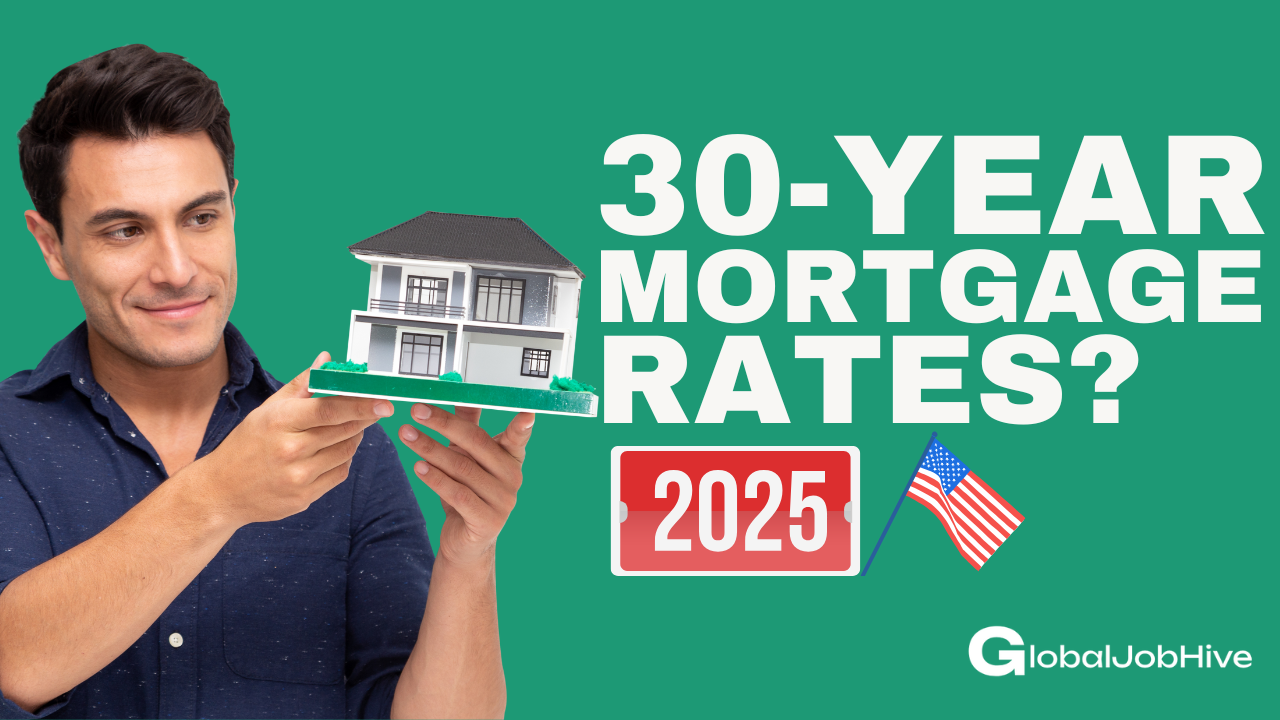Introduction
The 30-year fixed-rate mortgage remains the most popular home loan option for American homebuyers in 2025. This comprehensive guide examines the current state of mortgage rates, factors influencing them, regional variations, and expert predictions for the remainder of the year. Whether you’re a first-time homebuyer, looking to refinance, or interested in real estate market trends, understanding mortgage rate dynamics is essential for making informed financial decisions.
Current 30-Year Mortgage Rate Overview
Q1 2025 Rate Trends
The first quarter of 2025 has shown significant movement in 30-year fixed mortgage rates. Following the Federal Reserve’s monetary policy adjustments in late 2024, rates have stabilized somewhat after the volatility experienced during the previous year.
| Month (2025) | Average 30-Year Fixed Rate | Monthly Change | Year-Over-Year Change |
| January | 5.95% | -0.15% | -0.40% |
| February | 5.82% | -0.13% | -0.55% |
| March | 5.70% | -0.12% | -0.65% |
These figures represent national averages, with actual rates varying based on individual credit profiles, loan-to-value ratios, and lender specifics.
Key Factors Influencing 2025 Mortgage Rates
Several economic and policy factors are driving the current mortgage rate environment:
Federal Reserve Policy
- Benchmark Interest Rates: The Federal Reserve’s management of the federal funds rate continues to be a primary driver of mortgage rate trends
- Inflation Management: The Fed’s ongoing efforts to balance inflation control with economic growth have resulted in carefully calibrated rate adjustments
- Quantitative Measures: The Fed’s balance sheet management and bond purchasing activities directly impact long-term interest rates
Economic Indicators
The broader economic landscape provides essential context for understanding mortgage rate movements:
- Economic growth rate (GDP)
- Inflation metrics (CPI and PCE)
- Unemployment figures
- Housing market supply and demand dynamics
- Consumer confidence indices
Housing Market Conditions
The real estate sector itself influences mortgage rate trends through:
- Inventory Levels: Housing supply constraints in major markets
- Construction Activity: New housing starts and completion rates
- Buyer Demand: Shifting demographic needs and purchasing power
- Regional Market Performance: Varying growth rates across different geographic areas
Regional Variations in 30-Year Mortgage Rates
Highest and Lowest Rate Markets
Mortgage rates show notable regional differences across the United States:
| Region | Average 30-Year Rate | Variance from National Average |
| Northeast | 5.85% | +0.15% |
| Midwest | 5.62% | -0.08% |
| South | 5.75% | +0.05% |
| West | 5.92% | +0.22% |
| Pacific Northwest | 5.80% | +0.10% |
Factors Behind Regional Differences
Regional variations stem from several localized factors:
- Local economic conditions and job markets
- State-level regulatory environments
- Housing supply constraints
- Competition among regional lenders
- Property cost differences
Expert Forecasts for Remainder of 2025
Mortgage Banking Association Projections
The MBA forecasts that 30-year fixed mortgage rates will:
- Continue gradual decline through Q2 2025
- Stabilize between 5.4% and 5.6% in Q3 2025
- Potentially drop below 5.3% by Q4 2025, contingent on inflation data
Other Notable Predictions
Various financial institutions have offered their projections:
- Fannie Mae: Forecasts rates settling around 5.5% by year-end
- Freddie Mac: Projects a range of 5.3% to 5.7% through December 2025
- National Association of Realtors: Anticipates rates between 5.2% and 5.5% by Q4
Strategies for Homebuyers in the Current Rate Environment
Timing Your Mortgage Application
Consider these approaches when planning your mortgage timeline:
- Rate Lock Considerations: Optimal timing for securing rate locks
- Seasonal Factors: Historically favorable application periods
- Economic Calendar Awareness: Planning around Fed announcements and economic data releases
Alternative Financing Options
For buyers concerned about current 30-year rates:
- Adjustable-Rate Mortgages (ARMs): 5/1, 7/1, and 10/1 ARM options with lower initial rates
- 15-Year Fixed Loans: Higher monthly payments but significant long-term interest savings
- Buydown Options: Temporary rate reductions through seller concessions or upfront payments
Refinancing Outlook for Current Homeowners
Break-Even Analysis
Homeowners considering refinancing should evaluate:
- Current remaining loan balance
- Closing costs for refinancing
- Monthly payment reduction
- Expected time in the home
- Additional cash out requirements
Rate Thresholds
Most financial advisors suggest considering refinancing when:
- Current rate exceeds new available rate by at least 0.75-1.0%
- Homeowner plans to remain in the property for at least 3-5 years
- Closing costs can be recouped within a reasonable timeframe
Conclusion
The 30-year mortgage rate environment in 2025 presents both challenges and opportunities for homebuyers and homeowners alike. While rates remain elevated compared to the historic lows of 2020-2021, the gradual decline and stabilization trend offers some relief for prospective buyers. By staying informed about economic indicators, regional variations, and expert forecasts, consumers can make strategic decisions about their home financing options.
For personalized mortgage advice and current rate quotes, consider consulting with a licensed mortgage professional or financial advisor to evaluate your specific situation and needs.
